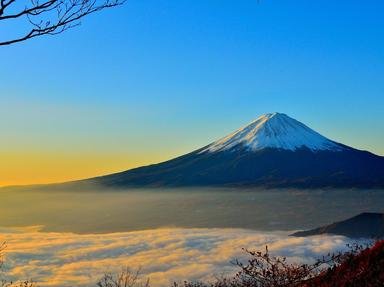Quiz Answer Key and Fun Facts
1. This photo contains the image of one of Japan's most famous volcanoes, Mount Fuji. On which of the Japanese main islands is Mount Fuji located?
2. Since World War Two, Japan has built up a thriving automotive industry. Which of the following cities found in Japan is actually named after the car manufacturer based there?
3. Was the Japanese city of Hiroshima the first city to be bombed using a nuclear weapon in World War Two?
4. Formula 1 motor racing is a popular event for spectators in Japan. Which of the following motor racing circuits in Japan was specifically designed, though, to host the American INDYCAR racing series?
5. The Japanese macaque monkey is one of the most northerly found monkeys in the world. By which ingenious way do some of the Japanese Macaques stay warm in winter?
6. Tokusatsu is a genre of Japanese cinema and television that combines live action with special effects. Kaiju is one type of Tokusatsu that uses monsters that attack cities. This image contains a statue dedicated to which Kaiju monster?
7. Among Japan's major industries is the manufacturing of electronic goods including televisions. Which of the following TV companies is one of Japan's main TV broadcasters?
8. The Samurai sword is one of the most recognisable weapons developed in Japan. Is it true that one of the types of sword a Samurai used is called a Katana?
9. In 2011, Japan was hit by a devastating natural disaster. Which of the following brought widespread destruction to the eastern part of Japan?
10. Considered a delicacy, which seafood dish is made from the flesh of a pufferfish that can be poisonous if not prepared properly?
Source: Author
mcsurfie
This quiz was reviewed by FunTrivia editor
agony before going online.
Any errors found in FunTrivia content are routinely corrected through our feedback system.


